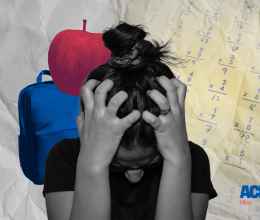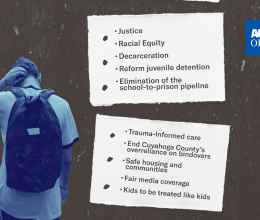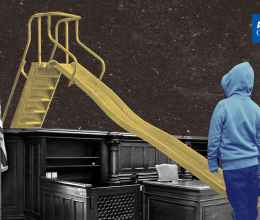This school year, all of Ohio’s public school children now have the same rights and protections when it comes to the use of seclusion and restraints. It’s been three years in the making.
Investigative Reporting
In August 2012, The Columbus Dispatch and StateImpact Ohio, a collaborative of Ohio NPR stations WCPN, WKSU, and WOSU, launched, “Locked Away,” an investigation into restraint and seclusion practices in Ohio schools. It revealed that children were being locked in small, cell-like rooms sometimes for hours out of the day, and that schools were not required to notify parents.
There were reports of children being held without lunch or in urine-stained rooms. One parent reported that her son had a nervous breakdown, and a student shared that he was kept in a dark room during his seclusion time. Children in school districts of all shapes and sizes were locked in rooms and restrained without any guidelines.
Read our “Seclusion Rooms: A Civil Liberties Briefing” and Disability Rights Ohio’s report on restraint and seclusion data in Ohio public schools.
What Followed
After the news broke, the Ohio Department of Education of convened a group of advocates, including the ACLU of Ohio to draft guidelines. When a proposed policy was released in October 2012, the ACLU of Ohio sent a letter to the Ohio Department of Education calling for 10 reforms. Many activists joined in to support these recommendations.
We wrote another letter in February 2013 calling on the State Board of Education to:
- Extend protections to public charter schools known in Ohio as “community schools.”
- Comply with an existing policy on “Diversity Strategies for Successful Schools.”
- Comply with the Individuals with Disabilities Education Improvement Act (IDEA).
- Restrict use of restraint and seclusion
A month later, we testified before the State Board of Education. By June 2013, many of our recommendations were accepted resulting in the ban of some practices, limiting of others, as well oversight and reporting requirements. However, this was a bittersweet accomplishment because the new rights and protections afforded to traditional public school students did not apply to public charter school (community school) students. The new standards created a separate and unequal system, leaving charter school students unprotected.
Fighting On
We didn’t let that stop us. We worked with parents, students, and other advocates like Disability Rights Ohio to highlight the unfairness. We met and spoke with legislators to ask that protections be extended to charter schools students. We didn’t let ourselves lose sight of traditional school students either, as we monitored and critiqued implementation.
In December 2014, Ohio lawmakers extended the protections guaranteed to traditional public schools students to public charter schools. Finally, in June 2015, the State Board of Education voted to incorporate charter schools into rule 3301-35-15.
Equally Protected
Beginning in the 2015-2016 school year, traditional public school and public charter school students will have the same rights and protections concerning the use of restraints and seclusion.
We couldn’t have done this without you. On behalf of all of Ohio’s public school children, who were at risk of being locked in dark rooms for hours, we thank you.








